Nile Cruises from Luxor
The legendary Nile River cuts a green path through Egypt, creating livable areas out of barren sands. The river’s role in Egyptian civilizations has been pivotal, helping people drink, eat and move for millennia.
Along the banks of the river lies an astounding collection of archaeological treasures that have been well-preserved by the arid climate.
The legendary Nile River cuts a green path through Egypt, creating livable areas out of barren sands. The river’s role in Egyptian civilizations has been pivotal, helping people drink, eat and move for millennia.
Along the banks of the river lies an astounding collection of archaeological treasures that have been well-preserved by the arid climate.
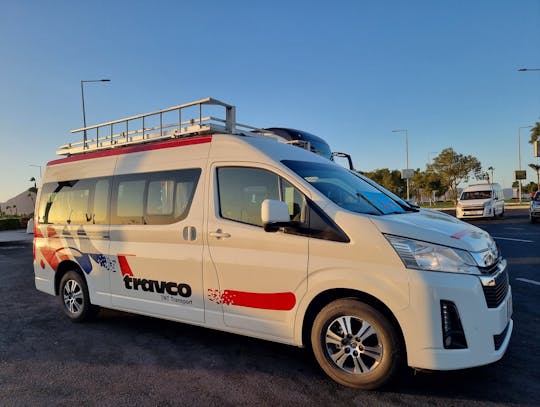
(0/24) checking Musement...
The legendary Nile River cuts a green path through Egypt, creating livable areas out of barren sands. The river’s role in Egyptian civilizations has been pivotal, helping people drink, eat and move for millennia.
Along the banks of the river lies an astounding collection of archaeological treasures that have been well-preserved by the arid climate.
Egypt’s sandy terrain has preserved countless works of ancient civilizations, from early Egyptians to Greeks and Romans. A Nile river cruise from Luxor is a convenient and comfortable way to access the remains of civilizations that have made the area their home throughout the ages.
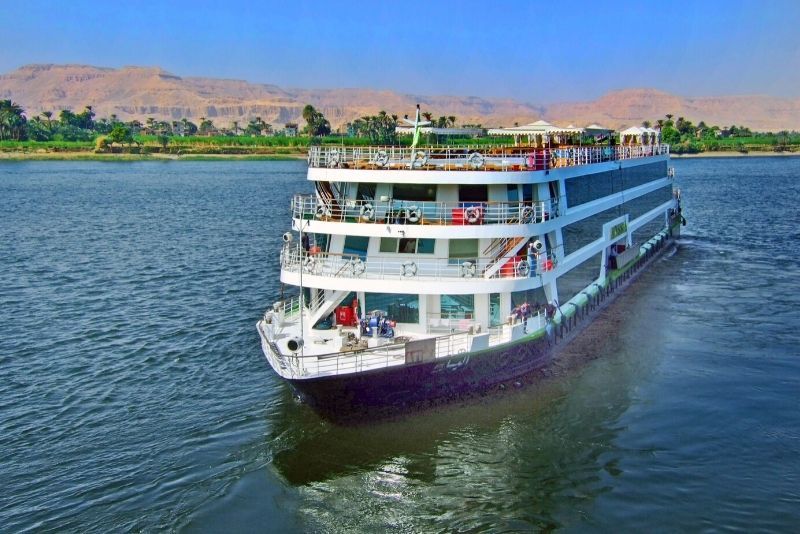
Here's all you need to know about Nile cruises, one of the most exciting day trips from Luxor.
What is the typical itinerary?
Board your boat in Luxor in time for breakfast or an early lunch before casting out to your first destination. Some cruises begin with a sunrise hot air balloon ride or sightseeing in Luxor before your day’s water travel.
If your cruise begins with a balloon ride, your guide will meet you at your accommodation at 5 AM for a 30- to 45-minute float over the city.
Luxor attractions include Karnak, the Luxor Temple, the Colossi of Memnon, the Valley of the Queens and the Valley of the Kings. If your cruise package provides meals, you will return to the boat for lunch between outings.
After a full day of sightseeing, enjoy dinner with entertainment as the ship heads towards the next day’s destinations.
Day 2 takes you to Edfu in the morning and to Kom Ombo in the evening. In Edfu, witness the Temple of Horus on a small-group guided tour. Many cruise packages include a ride to the temple in a horse-drawn carriage.
Take in some sun on the pool deck in the afternoon before your evening visit to Kom Ombo Temple, a monument with ties to conflicting gods.
Arrive at Aswan overnight for the last day of travel on a 3-day tour. Some tours conclude here with a morning checkout. Other tours of 3-days or more take some time to explore Aswan. In Aswan, you’ll discover Abu Simbel, the Unfinished Obelisk, the High Dam and the island of Agilika with its Temple of Philae.
Cruise packages of 4 to 8 days may spend more time at each stop, stretching the itinerary of shorter tours over more days.
Many cruises end at Aswan, requiring you to return to Luxor on your own. Eight-day tours return you by river to Luxor with 2 cruising days to enjoy the ship’s amenities and the memorable vistas.
What kinds of Nile cruises are available from Luxor?
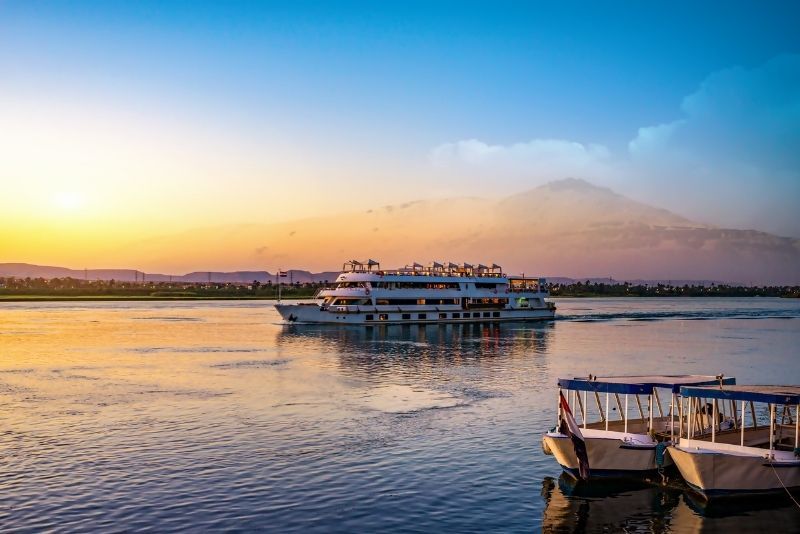
Whether you only have a day in Luxor or are delving into the area’s history for a week, there are plenty of options for Nile cruises.
Day cruises
Make the most of a short stay in Luxor by booking a day cruise to Dendera, the ruins of a formerly grand city to the north of Luxor.
The area is home to the Dendera temple complex, a beautifully-preserved group of ancient structures. These tours serve a traditional lunch on board the boat.
Multi-day cruises
Spend 3 to 8 days coasting upriver from Luxor to unmissable locales. Most cruises hit Edfu, Kom Ombo, Aswan and Luxor’s top attractions. Longer cruises spend more time at sites. Cruise packages usually include guided visits to towns and ruins.
Unpack just once for explorations of up to one week. Unwind in your well-appointed room, on the pool deck and lounge areas. Enjoy meals aboard the boat, with most packages providing at least breakfast and lunch daily.
The cruise team provides Egyptologist guides to lead you to the relics while filling you in with their multifaceted past.
How much does a Nile cruise from Luxor cost?
A day trip by boat to Dendera costs €120 per person and provides a guided visit to Dendera and lunch on board. Three-day/ 2-night cruises cost from €275 per person to €355 per person, depending on which meals and entry tickets are included in the package.
Some cruises only serve breakfast and lunch and require you to purchase dinner on shore or in the ship's restaurant.
Four-day/3-night cruises cost between €360 per person to €465 per person. Higher-cost tours provide all meals, entrance fees and extras like hot air balloon, felucca or horse-drawn carriage rides.
Five-day/4-night cruises cost from €370 per person to €1025 per person. Lower-priced tours typically do not cover entrance fees to historical attractions or serve all meals on board. Higher-priced cruises offer private tours of ruins.
Eight-day/ 7-night cruises cost between €675 per person and €910 per person, depending on inclusions like meals and entry fees.
Most multi-day cruises do not cover the price of drinks, including water, and charge a daily fee for internet access. Ship amenities typically include a pool, hot tub, spacious sundecks with shade, bars and nightly entertainment.
What will you see and do?
Karnak
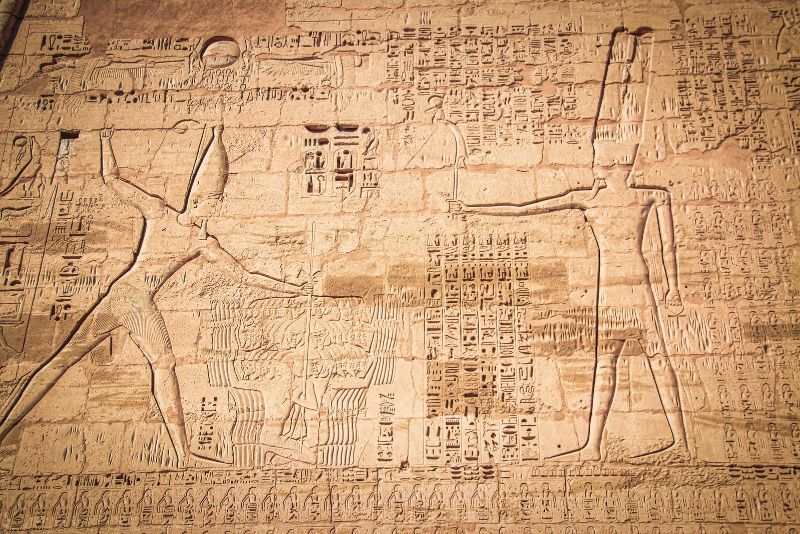
Just outside the limits of modern Luxor sits what’s considered the world’s greatest outdoor museum. Karnak encapsulates the best of what was the city of ancient Thebes.
The complex houses the biggest temple in Luxor, dedicated to the god Amun and his family. The walled city features beautifully-preserved stone structures and a sacred lake.
Walk along the Avenue of the Sphinxes, a 3-kilometer lane that passes between Karnak and the Temple of Luxor. Step inside golden stone monuments to spy painted and carved tablets and columns. Soak in the idyllic desert scenery beside the sacred lake.
The West Bank
Across the Nile from Luxor, a swath of sacred sites stretch from the river banks to the mountains to the west. Welcoming you to the area are the Colossi of Memnon, two towering stone gods that flank the entrance to the Valley of the Queens and the Valley of the Kings.
The West Bank serves as a necropolis for the pharaohs and their partners. The Valley of the Queens is the final resting place of pharaohs’ wives and the renowned Queen Hatshepsut.
The queen was the only female pharaoh, boasting a peaceful 20-year reign. The Valley of the Kings guard the remains of countless pharaohs and nobles in tombs hewn from the rock.
Edfu
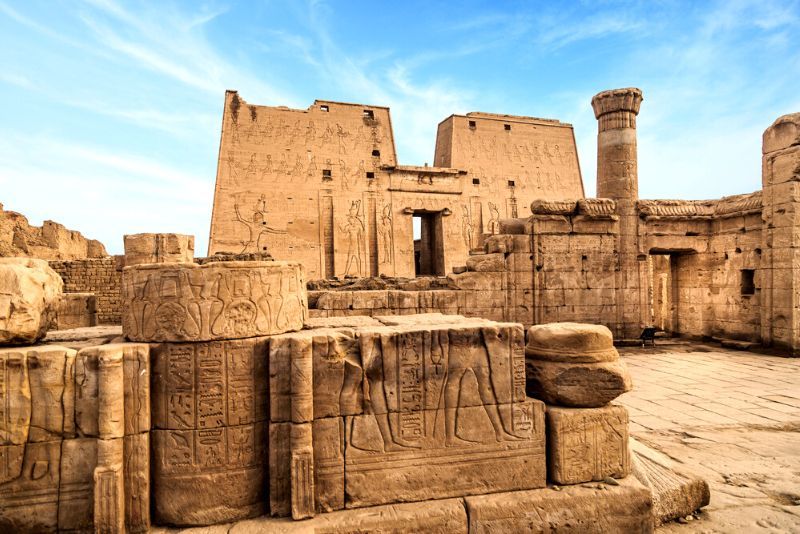
Just over 100 kilometers south of Luxor is located one of Egypt’s best-preserved temples. Edfu’s Temple of Horus is a lesser-known structure that has maintained its beauty over the eons.
Marvel at the ornate columns and statuary and the larger-than-life figures carved into the temple walls.
Before you arrive at Edfu, make sure to nab a great viewpoint from the deck as the ship goes through Esna Lock, just 50 kilometers south of Luxor. When you arrive at Edfu, many tours offer a horse-drawn carriage ride from the dock to the Temple of Horus.
Kom Ombo
Spend a few peaceful hours soaking in the remote desert scenery as the boat takes you to Kom Ombo, a hulking temple that was the subject of conflict in its day. Dedicated to rival gods Sobek and Haroeris, the temple’s builders decided to resolve the problem by constructing separate entrances and spaces for each god.
Aswan
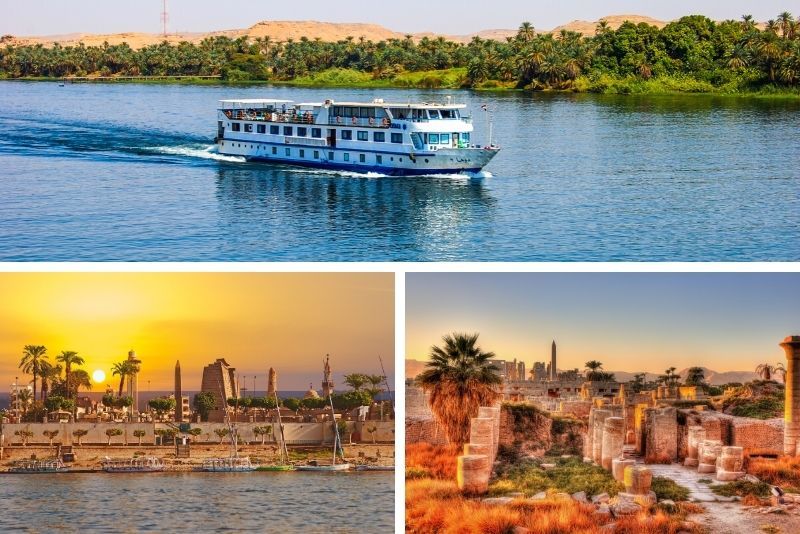
The final stop on most cruises is the southern town of Aswan, a modern city with fascinating ancient and contemporary spots. Aswan’s highlights are the High Dam, Agilika Island and Abu Simbel Temple.
Many cruises offer guided tours of Aswan's 60-year-old High Dam that protects the city and historic sites from flooding as well as a visit to Agilika Island. Board a motorboat to the island for a chance to witness the Temple of Philae, a monument to Isis.
Although not all cruises offer visits to Abu Simbel, a stop here is a must before your return to Luxor. Abu Simbel is a two-temple site carved into a sandstone hillside.
For 4,000 years, the two striking temples have been guarded by stone figures that flank their doorways. A peek inside shows you walls covered with detailed carvings and hieroglyphics.
On-board entertainment and recreation
Sightseeing is a tiring business, especially in the heat of southern Egypt. Recharge after your adventures with a dip in the pool and cooling drink in the shade on the well-appointed outdoor lounge area.
If you need a break from the sun, plush interior spaces are set up for relaxing in style.
Evening entertainment follows on-board dinners. While not every cruise package offers nightly shows, most feature performances of regional dances like belly, sufi and nubian dancing. Longer cruises may throw a “disco night.” For quieter escapes, many ships offer game rooms and libraries.
Is it wheelchair friendly?
Most cruises are wheelchair friendly, but some sightseeing stops may pose a challenge.
Are there any Nile cruises from other cities in Egypt?
Yes, there are tours departing from other cities in Egypt:

